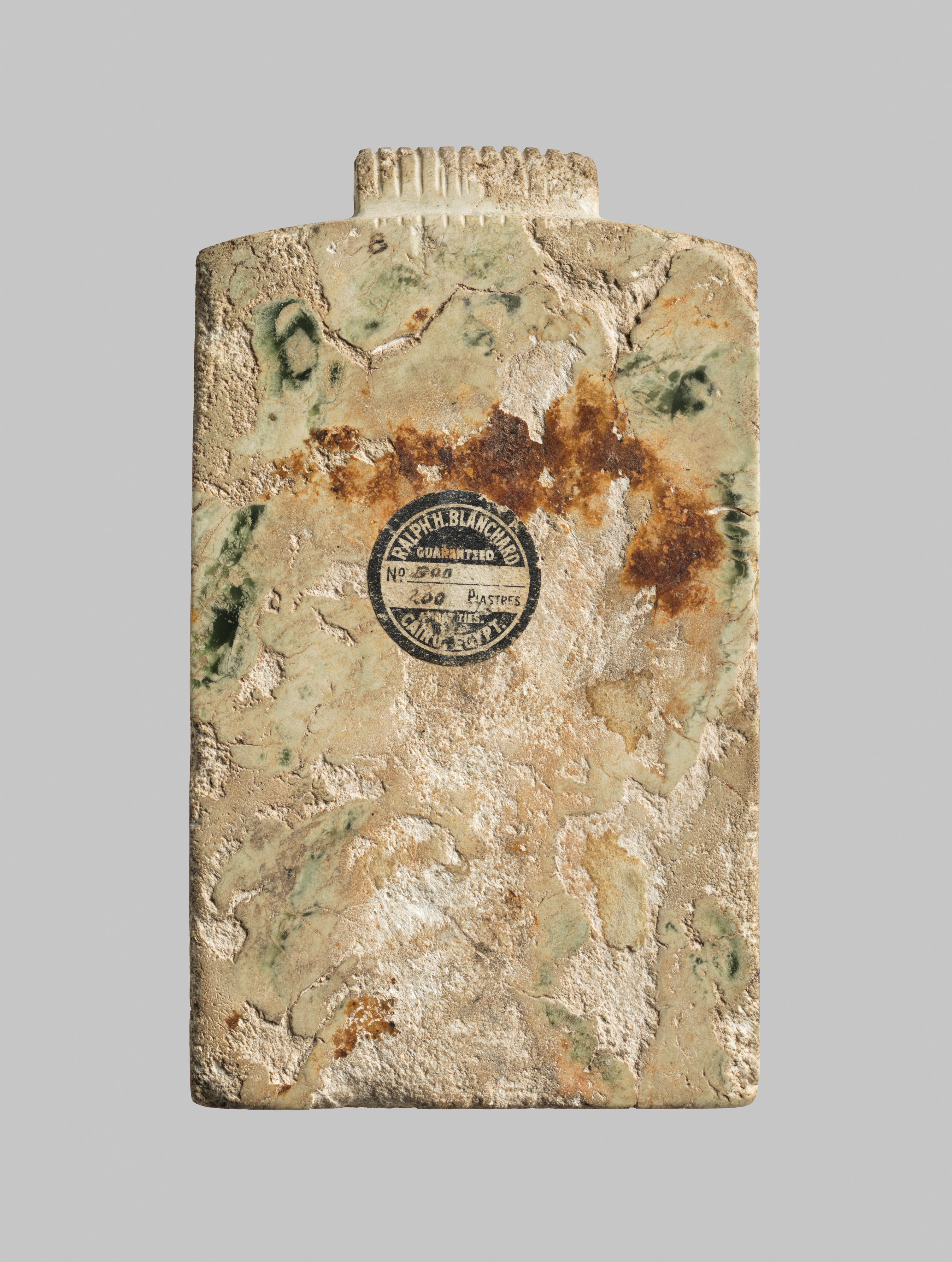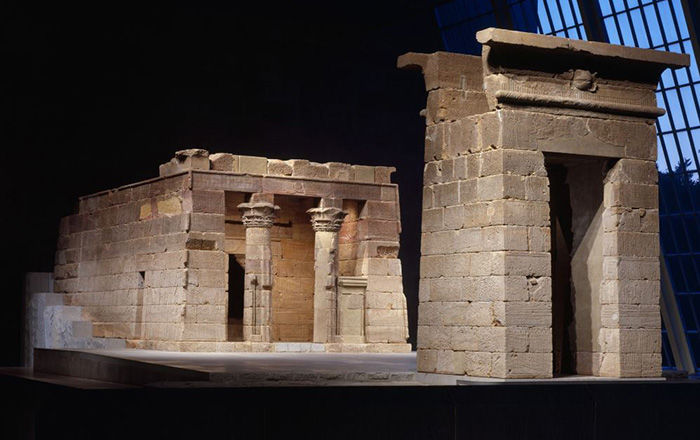Pectoral depicting Isis nursing infant Horus in the marsh surrounded by protective genii
New Kingdom, Ramesside–Kushite Period
This object depicts a goddess nursing a child against a backdrop of tall papyrus marshes. The image likely references the goddess Isis and her son Horus. This scene evokes the Osiris myth, according to which the primordial king of Egypt Osiris is killed by his brother Seth in a fit of jealous rage. As the wife of Osiris, Isis retreated to the papyrus marshes with her son Horus to protect him from his uncle’s wrath.
The goddess wears a vulture headdress surmounted with a sun disk. The child on her lap is depicted nude with a sidelock to signify his youth. The abundance of images in this pose, including statuettes, demonstrates Isis’s role as a nurturer and protector. The four deities surrounding the scene are represented with the heads of a jackal, crocodile, cow, and ram. These figures hold knives to protect the nursing pair.
Images of Isis nursing Horus in the marshes are newly prominent in the Third Intermediate Period. During this period, rulers sought to emphasize their relationship to royal mythology, often referencing tales of goddesses and their sons as a tool for legitimization. The marshes, as a magical and protective space where mythic moments were set in an idyllic surrounding, were repeatedly evoked on small objects, such as menat counterpoises.
Traces of blue-green glaze remain on the surface of the object. The perforated bail, or loop, at the top of the piece is reminiscent of a common type of Egyptian bead, suggesting that this object was strung and might have been worn or displayed. However, the object is larger and heavier than would be expected for a portable talisman. The omission of horns on Isis’s crown is also unusual. Furthermore, the selection of deities surrounding the pair differs from those found in similar scenes.
This image cannot be enlarged, viewed at full screen, or downloaded.
This artwork is meant to be viewed from right to left. Scroll left to view more.



